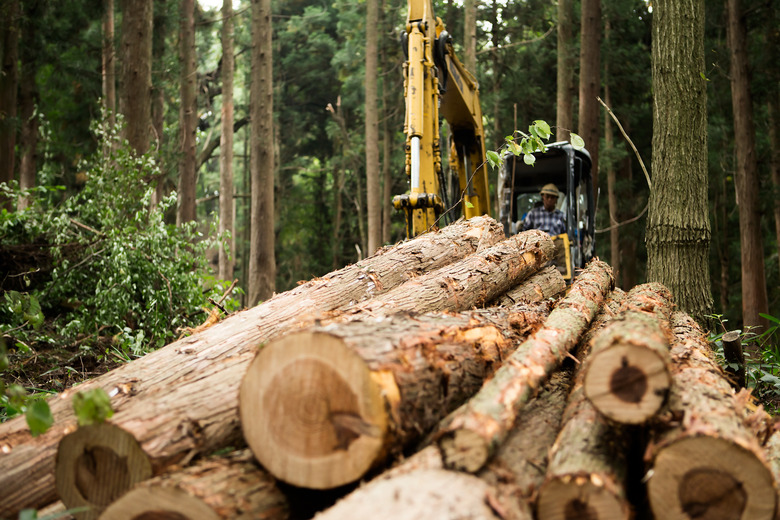Logging And Its Effect On The Ecosystem
Land managers have long used logging to provide for many human needs, including construction materials, land for development and fuel for homes and industry. During European settlement, logging practices took down much of the virgin forest that existed in the United States, including 95 percent of the virgin forest in the state of Wisconsin. Logging and its effects on the ecosystem are complex.
Forest Management
Forest Management
The U.S. Forest Service manages its lands to allow use of this renewable resource. Their mission involves managing the forests for their productivity. Oftentimes, logging replaces natural forces that would be in play in forest ecosystems. For instance, in some forest ecosystems, such as pre-European ponderosa pine forests, frequent low intensity fires occurred every 1 to 25 years, with lightning being the most frequent cause.
Benefits
Benefits
Management restores health to forests in several ways. Logging opens up the ecosystem for new plant growth. Removal of litter reduces the intensity of future fires by decreasing the fuel load so that devastating crown fires that kill all plant life in their path can be avoided. Logging favors the succession of plants that are adapted to an ecosystem, often getting rid of non-native species which may take over a habitat. Habitats where fire is frequent include species adapted to its presence. For example, jack pine relies on fire to prompt its cones to open. Non-native grasses like brome are not adapted to fire and will perish.
Negative Effects
Negative Effects
If managed improperly, logging can have serious environmental impacts. Logging potentially removes habitat for birds and other wildlife that use trees for cover, nesting habitat, or food. Owls, for example, prefer older trees with a larger diameter for nest cavities. If logging occurs along stream banks, the risk of flooding and erosion increases, as these trees help to anchor the soil in place Erosion also occurs through the logging operation itself. Large trucks used to transport felled trees travel on unimproved roads, which increases soil erosion and compounds its ill effects.
Clearcutting
Clearcutting
There is a distinct and important difference between forest management logging and clearcut logging. Forest management can benefit forests, while clearcutting destroys them. Clearcutting is often practiced in tropical forests for the purposes of harvesting wood and other plant products, as well as opening space for development. Negative environmental effects abound and rare or threatened plant species destroyed. Clearcutting adversely affects wildlife by reducing habitat.
Logging and Climate Change
Logging and Climate Change
Logging can impact climate change by increasing the amount of free carbon dioxide in the atmosphere. Plant life stores carbon dioxide within its tissues. Deforestation often goes hand in hand with fire, which releases this stored carbon dioxide into the air, compounding the greenhouse gas effects. A 2009 study in the journal, Conservation Letters, found links between logging and fire vulnerability.
References
- Mongabay: Atmospheric Role of Forests
- U.S. Forest Service: About Us-Mission
- "Ecology and Field Biology"; Robert Leo Smith; 1990
- "Conservation Letters"; Effects of logging on fire regimes in moist forests; D. Lindenmayer, M. Hunter, P. Burton, P. Gibbons; October 2009
Cite This Article
MLA
Rogers, Chris Dinesen. "Logging And Its Effect On The Ecosystem" sciencing.com, https://www.sciencing.com/about-6103371-logging-its-effect-ecosystem/. 22 November 2019.
APA
Rogers, Chris Dinesen. (2019, November 22). Logging And Its Effect On The Ecosystem. sciencing.com. Retrieved from https://www.sciencing.com/about-6103371-logging-its-effect-ecosystem/
Chicago
Rogers, Chris Dinesen. Logging And Its Effect On The Ecosystem last modified August 30, 2022. https://www.sciencing.com/about-6103371-logging-its-effect-ecosystem/
